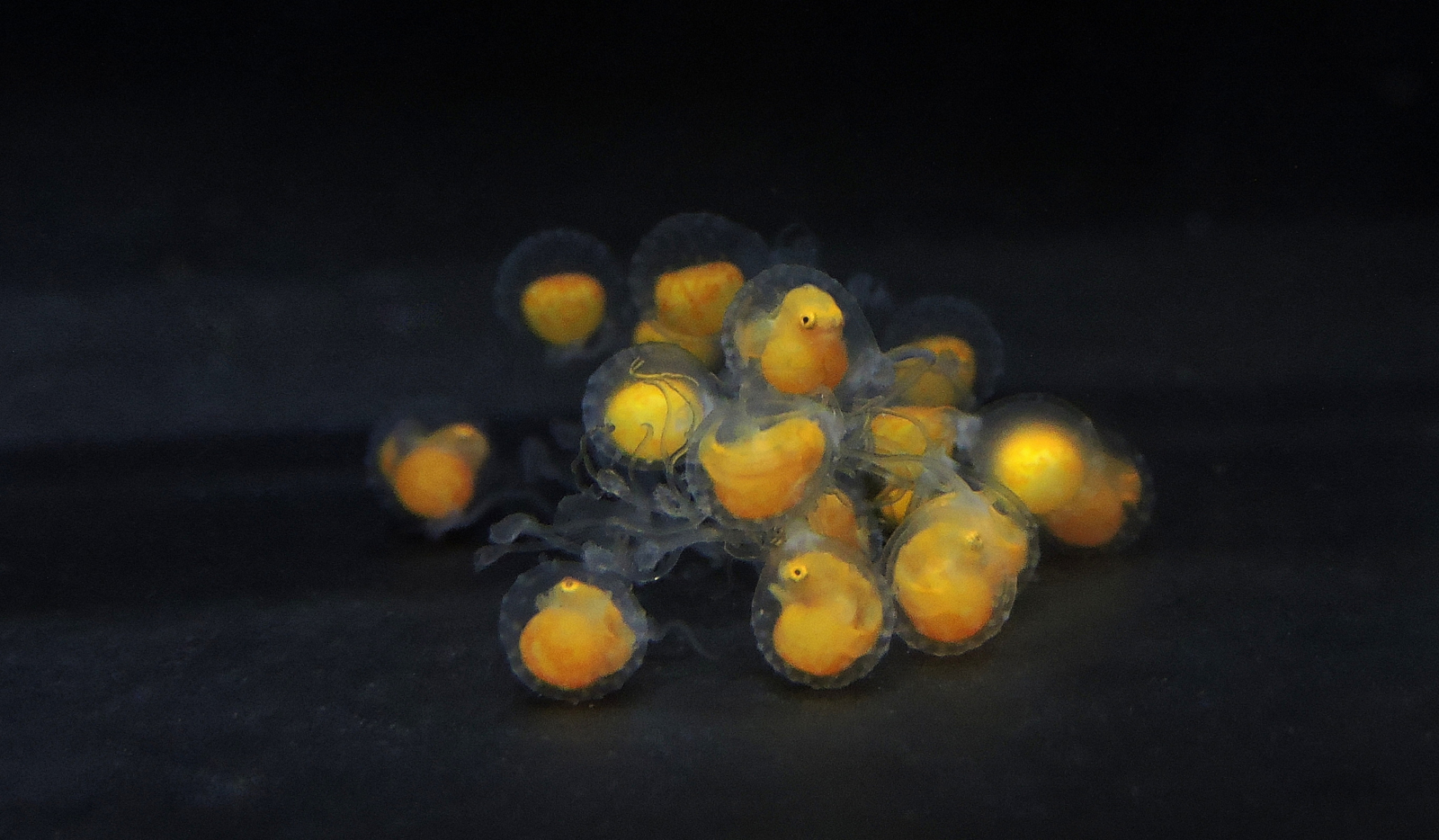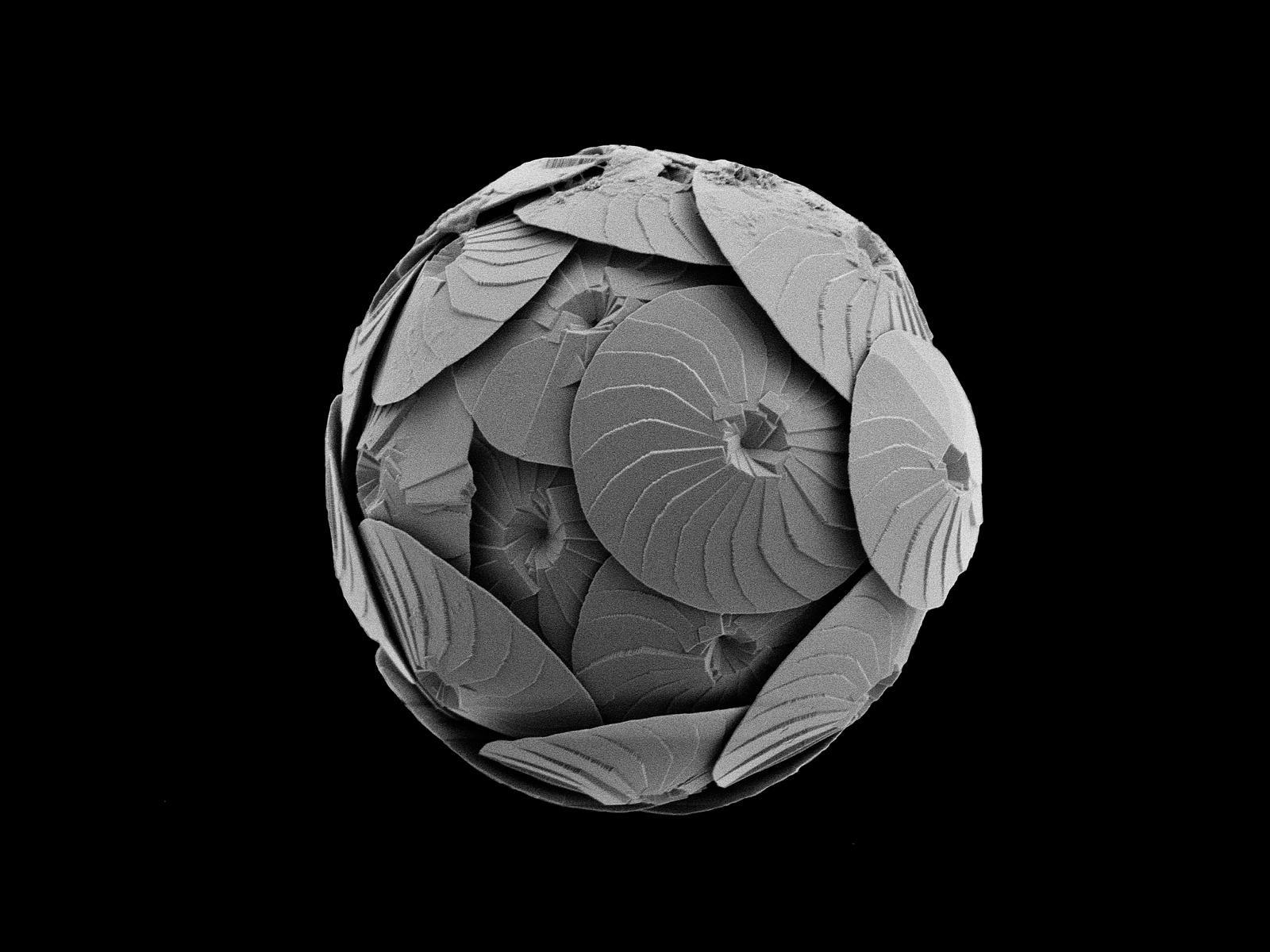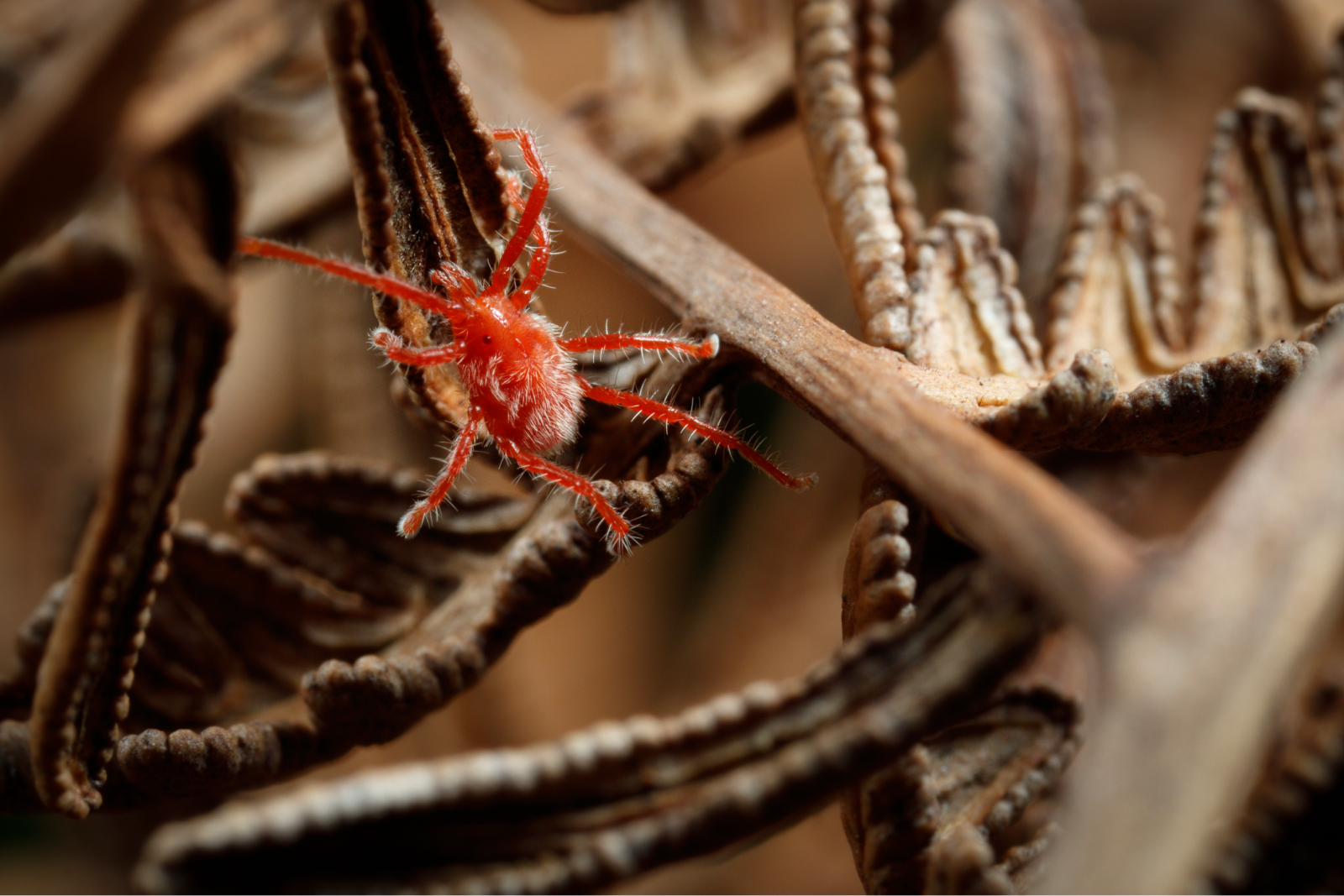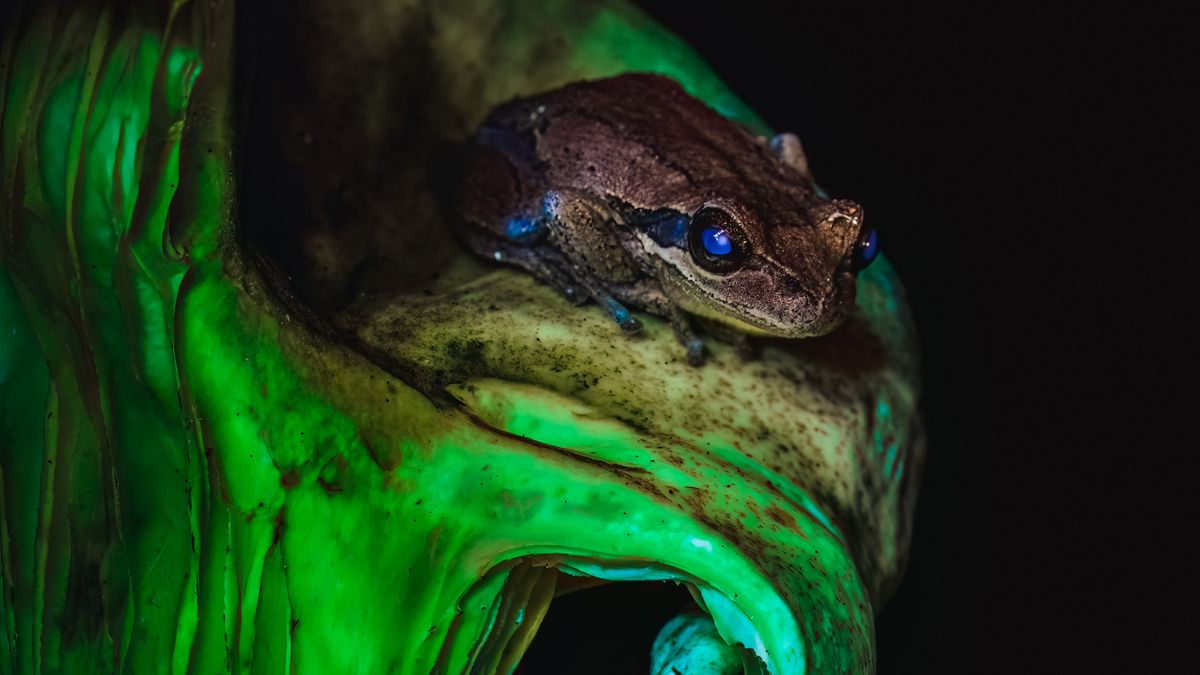A stunning image of a luminescent frog perched on a rare, glowing ghost mushroom has won the People’s Choice award for the annual Beaker Street Science Photography Competition in Tasmania.
In the photo, a blue light reflects off the eyes and skin of a biofluorescent brown tree frog (Litoria ewingii) as it sits on a funnel-shaped ghost fungus (Omphalotus nidiformis), named after its eerie bioluminescent glow during the night.
Photographer Toby Schrapel captured the scene at a pine plantation in Tasmania after weeks of searching for the rare mushroom species. “When I first saw them together I thought to myself this is my chance to get something absolutely magical,” Schrapel told Live Science in an email.
Related Mesmerizing photo shows weird, scowling parasitic plant that looks like a owl
The ghost fungus is a rare gilled mushroom native to Australia and Tasmania. They have thin structures called gills on the underside of the mushroom cap that are responsible for spore dispersal.
During the day, its trumpet-shaped body is white or pale brown, but at night, the mushroom’s gills glow green thanks to a process called bioluminescence — a chemical reaction between enzymes and oxygen that produces light, in the same way fireflies’ abdomens glow.
After weeks of searching for the elusive ghost mushroom, Schrapel received a tip from a friend about a pine plantation at the Seven Mile Beach Coastal Reserve. “We were searching, searching and finally came across a little frog on a tree, so I stopped for a look and a quick shot, then I heard, ‘Toby here’s one on a mushroom,'” Schrapel recalled.
In this unexpected moment, Schrapel realized that exposing the amphibian’s skin to ultraviolet (UV) light would reveal a brilliant blue glow, offering a rare chance to capture bioluminescence from the mushroom and biofluorescence from the frog in a single frame.
Biofluorescence “occurs when a living organism has a chemical surface that absorbs light at one wavelength and re-emits it at another,” Schrapel explained.
Biofluorescence and bioluminescence occur throughout the animal kingdom, and in this case, tree frogs may use it as a form of communication. Bioluminescence in fungi is less understood, but one theory suggests that the soft glow attracts spore-dispersing insects.
The photograph was announced as the People’s Choice winner at the Beaker Street’s annual Science Photography Prize on Sept. 8. Other finalists included a group of endangered red handfish (Thymichthys politus) embryos born in captivity, the plated armor of a microscopic algae and a bright red mite with spindly legs.

Photographer Andrea Williamson shot this image at the University of Tasmania’s Institute for Marine and Antarctic Studies (IMAS), which has successfully bred the endangered red handfish in captivity. This photograph was announced as the Judges Choice winner.

Photographer Luke Brokensha captured this image of a microscopic algae from a water sample taken from the Southern Ocean. This is a type of coccolithophore — a single-celled organism that produces oxygen through photosynthesis.

Photographer Ben Travaglini captured this image of a tiny mite in the subfamily Callidosomatinae climbing in the dry undergrowth of Hawley Nature Reserve in northern Tasmania.

